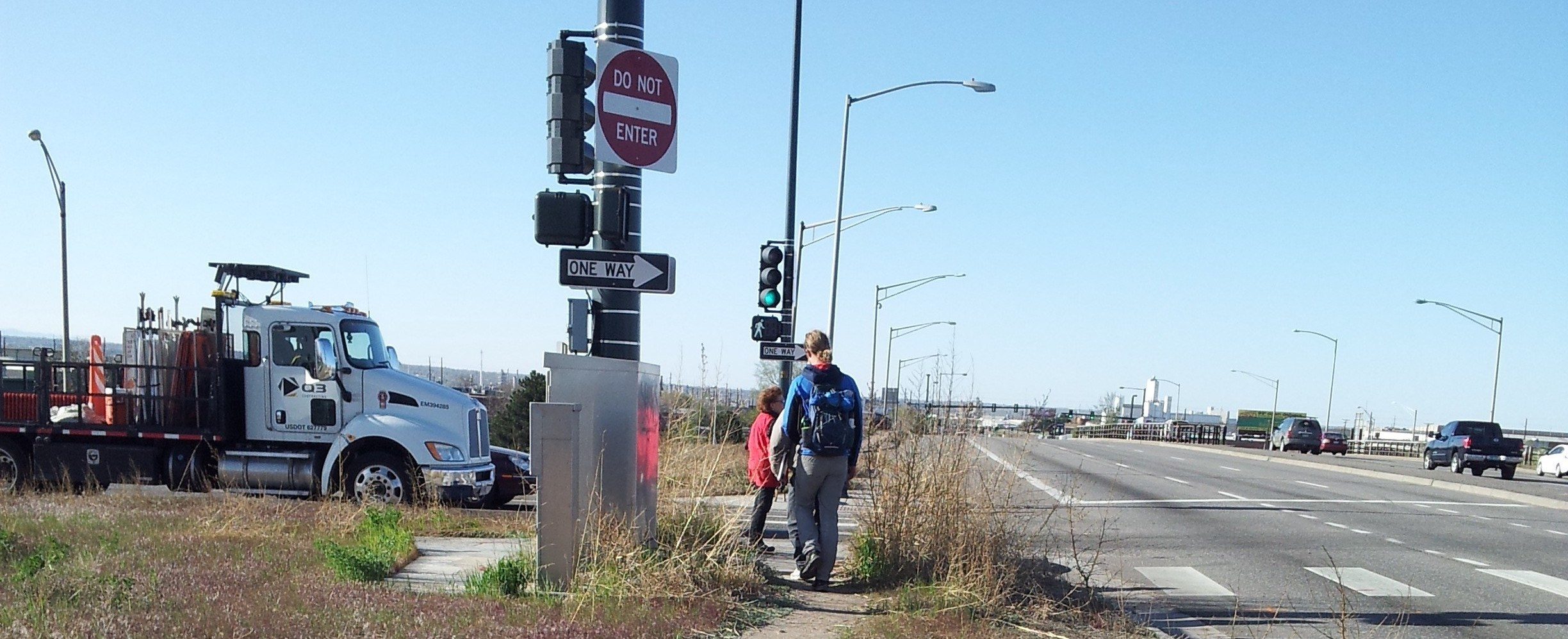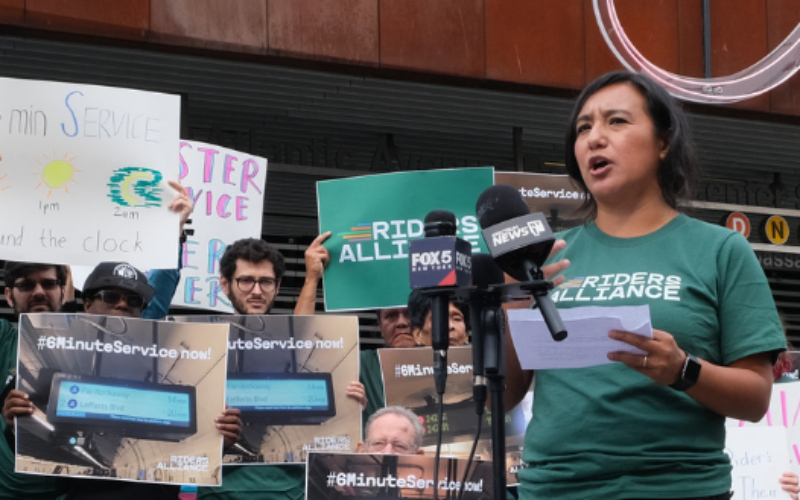
Photo via Streetsblog Denver
What’s an essential but often missing component of high ridership transit networks? It isn’t new branding on buses or the latest light rail car.
No, it’s the humble sidewalk (and its cousin, pedestrian-safe intersections). Because most riders in high ridership systems walk to catch buses and trains, transit stops must be supported by well-designed streets and sidewalks. Indeed, sidewalks are such a basic neighborhood feature that they’re usually taken for granted unless they’re missing or in disrepair.
Yet many cities in America have built streets without sidewalks, or allowed property owners to encroach on or neglect them. This unsurprisingly results in a patchy network of places that are welcoming and safe to walk. And while it’s bad enough to force anyone to navigate missing or cracked sidewalks, imagine doing so in a wheelchair or with a stroller and a few kids in tow.
Denver is one those cities. It estimates that 37% percent of sidewalks within a half mile of light rail stations and a quarter mile of bus stops are either missing or too narrow to walk on comfortably. This helps explain why the city’s transit ridership is moving in the opposite direction of its rapidly expanding population.
Growing recognition of the problem in Denver is beginning to pay off. This summer, Mayor Michael Hancock and the City Council put the final touches on a $937 million bond to build or improve city infrastructure. If approved by voters this fall, the bond will dedicate $30 million to a new Sidewalks to Transit program, which will help repair and upgrade access by foot to nearby light rail stations, bus stops, and bike share stations. Denver will join Nashville and Los Angeles as one of at least three U.S. cities or transit agencies with an explicit and funded walking to transit program.
This is definitely a strong step in the right direction. But the city estimates it will cost $475 million to bring Denver sidewalks fully up to scratch. Once the bond money is gone, the city will have to seek other funding to continue the program. One way Denver could get a lot of additional mileage is by experimenting with more quick-build treatments like painted sidewalk extensions and paths, especially as building new sidewalks is slow and expensive.
We’re looking forward to Denver’s progress and on the look-out for additional good examples of cities and transit agencies taking more advantage of walking, the original and still by far the strongest “last mile” means of reaching transit.
 On the Brink: Will WMATA’s Progress Be Erased by 2024?
On the Brink: Will WMATA’s Progress Be Erased by 2024?
The experience of being a WMATA rider has substantially improved over the last 18 months, thanks to changes the agency has made like adding off-peak service and simplifying fares. Things are about to get even better with the launch of all-door boarding later this fall, overnight bus service on some lines starting in December, and an ambitious plan to redesign the Metrobus network. But all of this could go away by July 1, 2024.
Read More Built to Win: Riders Alliance Campaign Secures Funding for More Frequent Subway Service
Built to Win: Riders Alliance Campaign Secures Funding for More Frequent Subway Service
Thanks to Riders' Alliance successful #6MinuteService campaign, New York City subway riders will enjoy more frequent service on nights and weekends, starting this summer. In this post, we chronicle the group's winning strategies and tactics.
Read More